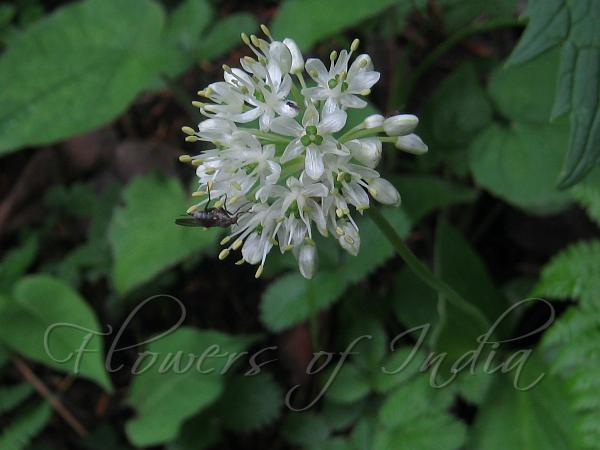|
| Alpine Leek |
|

|

| File size | 506018 |
| Original date | 6/15/11 1:10 PM |
| Resolution | 2816 x 2112 |
| Flash | Flash did not fire, auto |
| Focal length | 6.6mm |
| Exposure time | 1/80s |
| Aperture | 3.0 |
| Focus Distance | |
| Metering Mode | Multi-segment |
| Camera make | Canon |
| Camera model | Canon PowerShot A495 |
| Sensor type | OneChipColorArea |
|
|
|
|
Photo: |
Botanical name: Allium victorialis Family: Amaryllidaceae (Nargis family)
Synonyms: Cepa victorialis, Allium plantagineum, Allium anguinum
Synonyms: Cepa victorialis, Allium plantagineum, Allium anguinum
Alpine Leek is interesting onion-like plant, with
cylindrical bulb 4-6 cm long, coat net-veined, fibrous. Leaves are 3-6,
stalked, broadly lanceshaped to elliptic, 10-20 cm long, 4-6 cm broad,
shorter than the flowering stem. Flowers are borne in an umbel, atop a
long leafless stem. Flower-stalks are 1-2 cm long. Tepals are white to
yellow-white, 5 mm long, oblong, pointed to blunt. Filaments are longer
than the tepals, entire, outer narrower, subulate, inner broader,
lanceshaped. Style is protruding. Seeds are almost spherical. Bulb is
eaten raw or cooked, as sn onion substitute. The plants are as pungent
as garlic. The bulbs are rather small, about 1-2 cm in diameter, and
are produced in clusters on a short rhizome. Leaves are eaten raw or
cooked. The stems and leaves are eaten, they are much favoured in
Japan. Flowers are eaten raw or cooked. The juice of the plant is used
as a moth repellent. The whole plant is said to repel insects and
moles. Alpine Leek is found in the Himalayas, C. Asia and E. Asia, at
altitudes of 600-2500 m. Flowering: June-August.
Medicinal uses:  The root is antiscorbutic, carminative, diuretic and vermifuge. Used in
the treatment of profuse menstruation.
The root is antiscorbutic, carminative, diuretic and vermifuge. Used in
the treatment of profuse menstruation.
 The root is antiscorbutic, carminative, diuretic and vermifuge. Used in
the treatment of profuse menstruation.
The root is antiscorbutic, carminative, diuretic and vermifuge. Used in
the treatment of profuse menstruation. | Identification credit: Krishan Lal | Photographed in Sirmaur Distt, Himachal Pradesh |
• Is this flower misidentified? If yes,